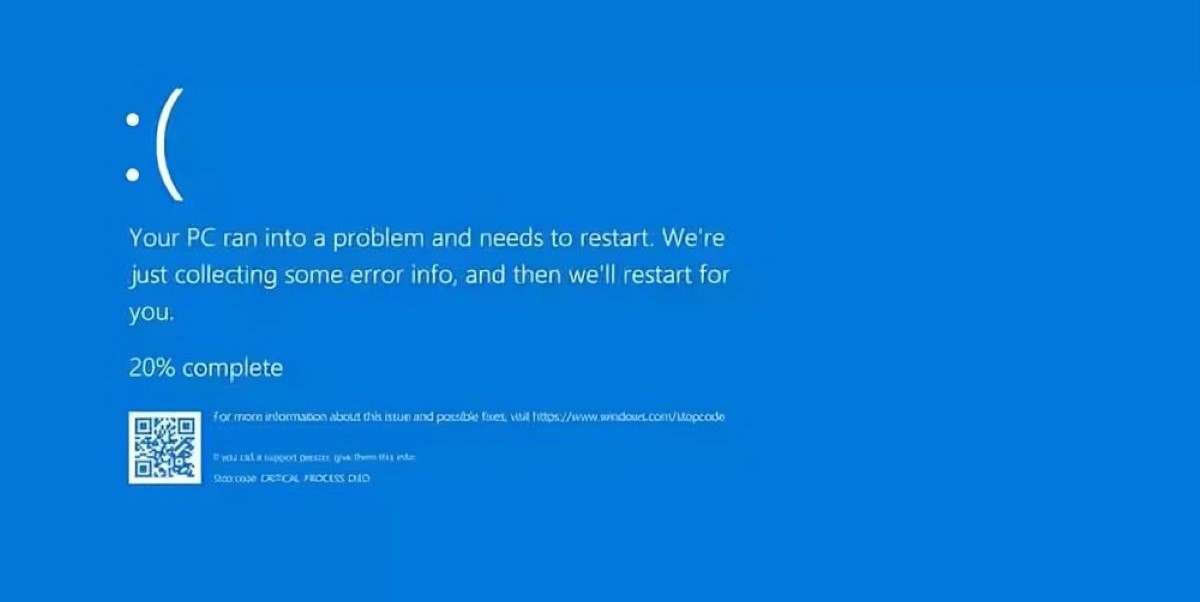Insights from recent CrowdStrike outage reveals the dark side of technology disruption and India needs a system in place.
Published Jul 20, 2024 | 12:00 PM ⚊ Updated Jul 20, 2024 | 12:42 PM

Blue screen of death. (X)
In today’s fast-paced digital age, technology disruption is often celebrated for its potential to revolutionize industries, streamline operations, and improve quality of life. It is, however, crucial to recognize that technology isn’t infallible. When it fails, the consequences can be severe. It impacts businesses and human lives in profoundly adverse ways.
Countless Windows PCs displayed dreaded “blue screen” errors during the recent Microsoft outage due to CrowdStrike’s bad software upgrade. The outage brought down servers at airlines, locked up computers at banks, and hurt healthcare services. It serves as a stark reminder of the vulnerability of our digital infrastructure.
As an IT engineer, I have witnessed firsthand the profound impact that such disruptions can have on both — individual lives and broader societal functions. Why not take this opportunity to delve into the dark side of technology disruption, illustrating its potential to upend daily life. In this article, I try to draw parallels to the pandemic and modern warfare scenarios using the Microsoft outage as a case study.
The Microsoft outage wasn’t just an inconvenience. The infamous “blue screen of death” not only interrupted workflows but also led to productivity loss & business process disruption. For companies, this meant delayed projects & missed deadlines, pauses in the operational processes, and financial losses.
For individuals, it translated to frustration, lost time, and the realisation of being handicapped without technology. Our dependency on technology is both a strength and a vulnerability given how deeply integrated IT systems are in our daily routines. From remote work setups and online education to tele-health services and digital banking, a single disruption can affect multiple aspects of life, leading to chaos and uncertainty.
The COVID-19 pandemic demonstrated how disruptions — whether biological or technological — can alter our way of life. Just as the pandemic forced us to rethink our healthcare systems, supply chains, and daily interactions, a significant IT disruption compels us to reconsider our technological resilience.
During the pandemic, the shift to remote work and online services was facilitated by a robust IT infrastructure. However, outages like the recent Microsoft incident expose how fragile this setup is. It reminds us of the critical need for reliable digital systems.
Can it lead to a Digital Pandemic disruption in future like we have witnessed during the Biological pandemic in the past?
Look at modern warfare where cyber-attacks have become a primary weapon. Nations and organizations increasingly target IT infrastructure to cripple opponents without physical confrontation. The Microsoft outage, though not a result of a cyber-attack, underscores the potential devastation such an attack could bring. Disrupting communication systems, financial networks, and critical infrastructure through IT failures can paralyze a society, causing severe damage.
The event serves as a crucial reminder of what India needs to do to bolster its Digital Public Infrastructure (DPI). India should look at investing in private infrastructure and technology.
Countries like China and Russia have developed robust, self-reliant digital ecosystems that India can take a cue from. It will empower India to mitigate the risks associated with dependency on foreign technology and ensure greater resilience in its systems.
China and Russia have both made substantial investments in developing their own digital ecosystems. China’s “Great Firewall” and extensive domestic technology companies like Huawei, Alibaba, and Tencent illustrate a model of digital self-reliance. Similarly, Russia has developed its own internet infrastructure, known as Runet, which can function independently from the global internet if necessary
These strategies have not only reduced their dependency on foreign technology but also enhanced their cybersecurity and resilience against external threats. By investing in indigenous digital infrastructure, India can derive potential benefits including reduced dependency on foreign technology, enhanced cybersecurity, economic growth, and improved public services. This also aligns with the government’s ‘Make in India’ push.
While technology disruption has the potential to drive progress and innovation, it is essential to acknowledge and prepare for its potential downsides. IT failures, such as those caused by faulty software patches, can have far-reaching and severe impacts on human life and business operations. Understanding these risks and implementing stringent safeguards, equips us to navigate the complexities of our increasingly digital world better.
As we continue to embrace technological advancements, it is crucial to maintain a balanced perspective. Recognizing the potential for disruption and taking proactive measures to mitigate risks will help ensure that technology serves to enhance, rather than compromise, our lives and businesses.
